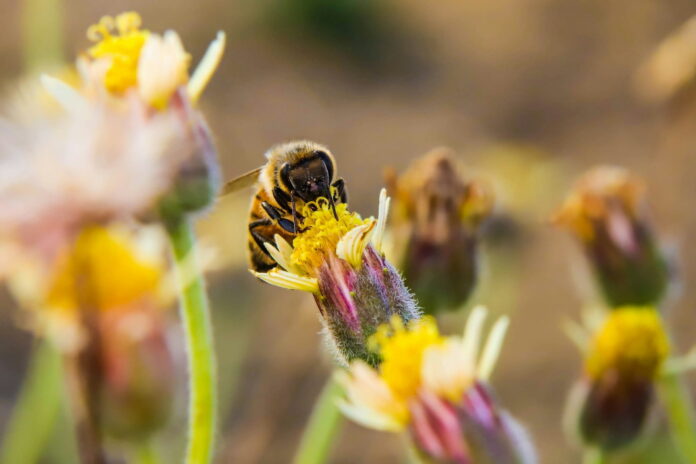Pollinators play a crucial role in maintaining the health of our ecosystems and the productivity of our agricultural systems. However, many pollinator species are currently facing significant threats that are leading to their decline. This article explores the importance of endangered pollinators, the key threats they face, and the effective conservation strategies that can be implemented to protect them.
Understanding the Importance of Endangered Pollinators
Pollinators, including bees, butterflies, birds, and bats, are essential for the reproduction of over 75% of flowering plants and nearly 35% of global food crops. Their role in pollination is critical for the production of fruits, vegetables, nuts, and seeds, which are vital components of human diets. Without the services provided by these pollinators, the availability and diversity of these foods would be significantly reduced, leading to potential nutritional deficiencies and economic losses.
Beyond their direct contributions to agriculture, pollinators also support biodiversity and ecosystem stability. Many plant species rely on pollinators for reproduction, and their absence could lead to a decline in plant diversity. This, in turn, affects other wildlife that depends on these plants for food and habitat, creating a cascading effect throughout the ecosystem. Therefore, the decline of pollinator populations can have far-reaching consequences beyond just the immediate loss of pollination services.
In addition to their ecological and economic importance, pollinators hold cultural and aesthetic value. Many cultures around the world revere certain pollinators and incorporate them into their traditions, art, and folklore. The presence of vibrant pollinators like butterflies and hummingbirds also enhances the beauty of natural landscapes, contributing to human well-being and the enjoyment of nature. Recognizing the multifaceted importance of pollinators underscores the urgency of protecting these endangered species.
Key Threats Facing Pollinator Populations Today
Pollinator populations are declining globally due to a combination of factors, with habitat loss being one of the most significant threats. Urbanization, agricultural expansion, and deforestation have led to the destruction and fragmentation of natural habitats, reducing the availability of food and nesting sites for pollinators. The conversion of diverse landscapes into monocultures also limits the variety of plants available for pollination, further stressing pollinator populations.
Pesticide use is another major threat to pollinators. Many pesticides, particularly neonicotinoids, are toxic to bees and other pollinators, affecting their ability to forage, navigate, and reproduce. Pesticide exposure can lead to direct mortality or sublethal effects that weaken pollinator health and resilience. Moreover, the widespread use of pesticides can contaminate the environment, affecting not only target pests but also non-target pollinator species.
Climate change is also impacting pollinator populations by altering the distribution and availability of flowering plants. Changes in temperature and precipitation patterns can affect the timing of plant blooming, leading to mismatches between the availability of floral resources and the life cycles of pollinators. Additionally, extreme weather events such as droughts, storms, and heatwaves can directly harm pollinator habitats and reduce their populations. Addressing these threats requires a comprehensive approach that considers the complex interactions between pollinators and their environment.
Implementing Effective Conservation Strategies
To protect endangered pollinators, it is essential to implement conservation strategies that address the various threats they face. One effective approach is to enhance and restore habitats by creating pollinator-friendly environments. This can be achieved by planting native flowering plants that provide a continuous source of nectar and pollen throughout the growing season. Establishing wildflower meadows, hedgerows, and green corridors can also help connect fragmented habitats, allowing pollinators to move and forage more freely.
Reducing pesticide use and promoting integrated pest management (IPM) practices are crucial for minimizing the impact of chemicals on pollinators. IPM involves using a combination of biological, cultural, and mechanical control methods to manage pests, reducing the reliance on chemical pesticides. When pesticides are necessary, selecting less toxic options and applying them in ways that minimize exposure to pollinators can help mitigate their harmful effects. Educating farmers, gardeners, and the public about the importance of pollinators and safe pesticide practices is also essential for fostering a more pollinator-friendly environment.
Supporting research and monitoring efforts is vital for understanding pollinator populations and the effectiveness of conservation strategies. Long-term monitoring programs can track changes in pollinator abundance, diversity, and health, providing valuable data to inform conservation actions. Research on pollinator behavior, ecology, and interactions with their environment can also help identify critical needs and develop targeted conservation measures. Collaboration among scientists, policymakers, land managers, and communities is key to implementing successful conservation strategies and ensuring the protection of endangered pollinators for future generations.
